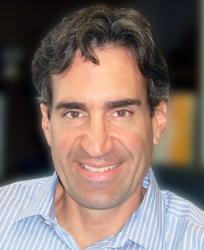HFS Research: Cognizant’s Executive Vice President of Strategy and Marketing Talks About Cognizant’s Impressive Growth and Future Outlook
 |
“The sense of entrepreneurialism is something that we’ve tried very hard to protect,” Malcolm Frank tells HFS Research CEO, Phil Fersht. “Markets are changing so quickly and we need to change with the market. That evolution is one that we just make sure is a fundamental capability of the firm. But you have to have a sense of malleability to change with the marketplace. We all see what’s going on in the marketplace. We all can sense and recognize the changes that are going on. But I think the firms that can respond to those appropriately, are the firms that are rewarded in the market place.”
He adds, “The client need today is very different relative to what I see as the ‘big break’ around Bear Stearns time. And during this time we had these two hurricane force winds hit the clients. One is that they started going through structural business change. At the same time we have this technical shift around the SMAC stack. Consumer technology is really coming into the enterprise in a meaningful way.”
According to Frank, the client problem has changed. “If you look at the offshore outsourcing business [in] 2006-2007, remember this was the time of the ‘world is flat’ and it really was about taking an existing client capability and running a ‘better faster cheaper’ on a global platform. The client problem, today, is fundamentally different,” he says. “The clients are not saying, “I know this process and I know the organization, I know the technology, help me do it better faster cheaper”. They’re saying “I’m not sure what the process is. I’m not sure about the right organizational model. And I’m not sure about the right technical architecture. Help me through that process of discovery and ideation and innovation, and bring to that me”. So it’s really a different market we’re recognizing – not only do clients need to run better, but they need to run different.”
Frank observes, “We’re getting to a world where a CIO is being asked through the SMAC stack to fundamentally innovate. So the CEOs turn around to the CIOs and say, “You are the technology person. We presume you should do that.” And IT turns around and says, “We don’t have that skill yet”. That gap needs to be closed. I think in closing that gap, you’re seeing new demands on the CIO office.” He maintains that the SMAC stack is integrated. “There is a multiplier effect when you can have a mobile solution in the cloud that’s driving tons of customer analytics. It’s important for clients to conceptualize these as an integrated stack,” he notes. “When vendors, particularly hardware and software vendors, were running around and talking about ‘Cloud this and Cloud that’, and ‘Big Data this and Big Data that’, we felt they were missing the point, because they weren’t driving conversion; whereas the SMAC Stack, when it is integrated, does start to drive business solutions.”
Enterprise IT has gone through multiple phases, Frank observes. And each phase is cumulative—they build upon one another. “For example we had mainframes leading to minicomputers, then to client/server leading to the Internet,” he opines. “We think that the SMAC stack represents that fifth wave but it needs to be integrated and sitting on top of the prior waves. So we’re not going to see legacy environments go away. The issue is how do you take the SMAC stack to then tap into your ERP backbone or your CRM infrastructure to leverage those in ways that you haven’t before. We are pushing that into the market place and it has resonated reasonably well.”
According to Frank, the Internet of Things is a very big deal, and we have underestimated that to date. “Today, most data is created by human beings. But we are going to cross the line where most data generated is by machines. So it can be machine-to-machine communication or machine-to-human communication, and vice versa,” he says. “That shift,” he adds, “is going to redefine the role of IT and the value of a product. And we’re already starting to see instances of this. We’re making the shift where our customers, Fortune 500 firms, are recognizing that they can actually generate more economic value from the information around people and products as opposed to the actual asset themselves. We’re going to have a sea change where a lot of traditional sectors start to conceptualize their businesses that way and want IT to support it that way. That’s where we’re going.”
To read the two-part interview, click here: Part 1 and Part 2.
